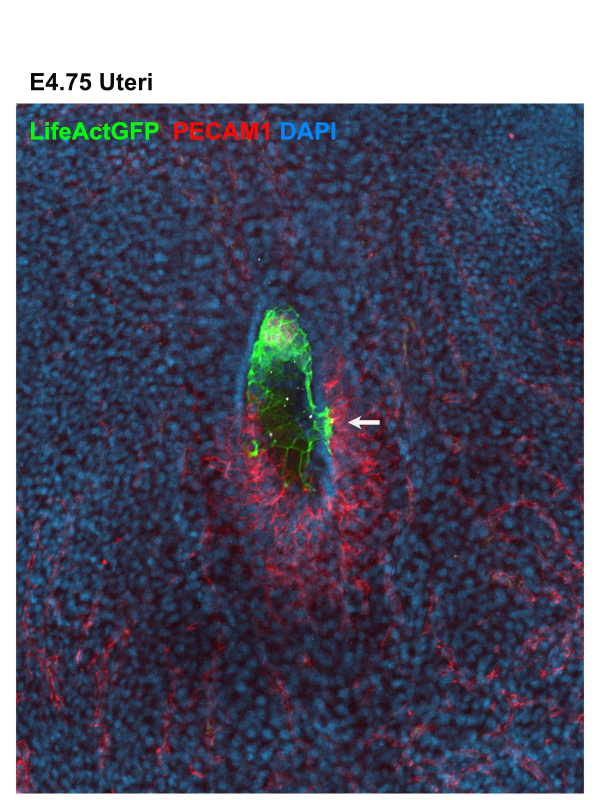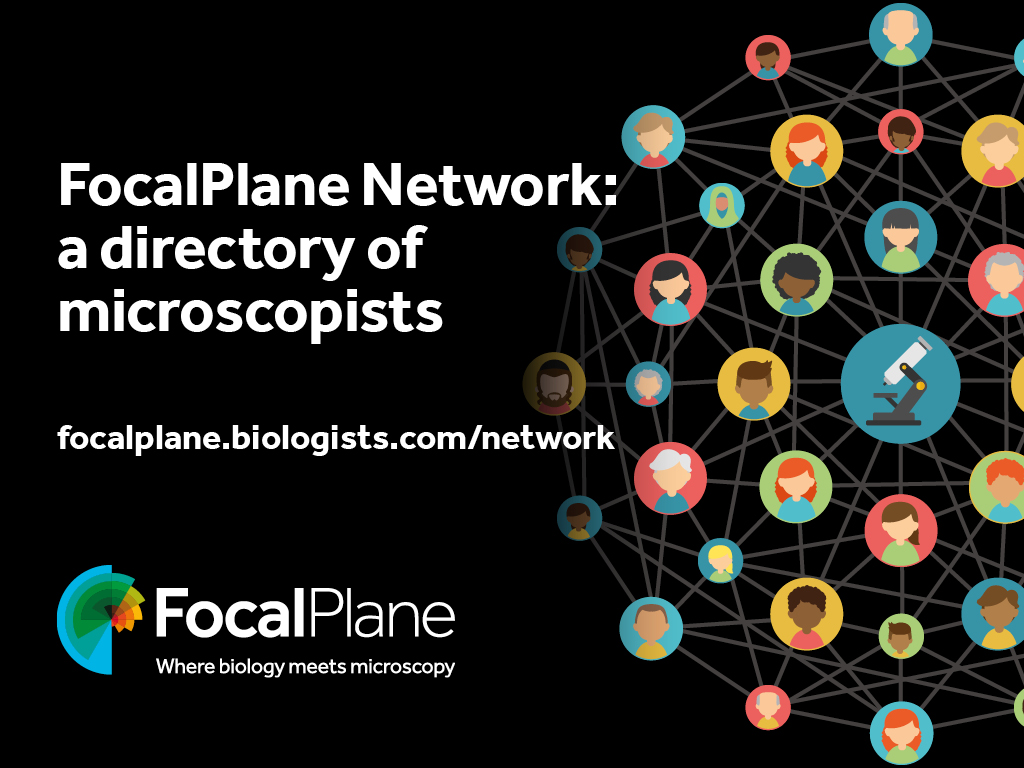March in preprints
Posted by the Node, on 8 April 2022
Welcome to our monthly trawl for developmental biology (and related) preprints.
The preprints this month are hosted on bioRxiv, arXiv and preprints.org – use these links to get to the section you want.
- Patterning & signalling
- Morphogenesis & mechanics
- Genes & genomes
- Stem cells, regeneration & disease modelling
- Plant development
- Evo-devo
Developmental biology
| Patterning & signalling
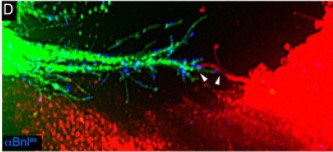
GPI-anchored FGF directs cytoneme-mediated bidirectional signaling to self-regulate tissue-specific dispersion
Lijuan Du, Alex Sohr, Yujia Li, Sougata Roy
Modelling global mRNA dynamics during Drosophila embryogenesis reveals a relationship between mRNA degradation and P-bodies
Lauren Forbes Beadle, Jennifer C. Love, Yuliya Shapovalova, Artem Artemev, Magnus Rattray, Hilary L. Ashe
Canonical Wnt Signaling and the Regulation of Divergent Mesenchymal Fgf8 expression in Axolotl Limb Development and Regeneration
Giacomo L. Glotzer, Pietro Tardivo, Elly M. Tanaka
Bone Morphogenetic Protein (BMP) signaling regulates germline stem cell self-renewal in the newly formed Drosophila testis stem cell niche
Merci N Best, Ashley Fidler, Marieke K Jones, Matthew Wawersik
High-resolution Ribosome Profiling Reveals Translational Selectivity for Transcripts in Bovine Preimplantation Embryo Development
Linkai Zhu, Tong Zhou, Rajan Iyyappan, Hao Ming, Yinjuan Wang, Michal Dvoran, Qi Chen, R. Michael Roberts, Andrej Susor, Zongliang Jiang
Combinatorial interactions of Hox genes establish appendage diversity of the amphipod crustacean Parhyale hawaiensis
Erin Jarvis Alberstat, Kevin Chung, Dennis A Sun, Shagnik Ray, Nipam H. Patel
Complement facilitates developmental microglial pruning of astrocyte and vascular networks
Gopalan Gnanaguru, Steven J. Tabor, Gracia M. Bonilla, Ruslan Sadreyev, Kentaro Yuda, Jörg Köhl, Kip M. Connor
Unmyelinated neurons use Neuregulin signals to promote myelination of neighboring neurons in the CNS
Daniel E. Lysko, William S. Talbot
Nr6a1 controls axially-restricted body elongation, segmentation, patterning and lineage allocation
Yi-Cheng Chang, Siew Fen Lisa Wong, Jan Schroeder, Gabriel M. Hauswirth, Natalia A Shylo, Emma L Moore, Annita Achilleos, Victoria Garside, Jose M. Polo, Jan Manent, Paul Trainor, Edwina McGlinn
Innexin function dictates the spatial relationship between distal somatic cells in the Caenorhabditis elegans gonad without impacting the germline stem cell pool
Theadora Tolkin, Ariz Mohammad, Todd Starich, Ken C. Q. Nguyen, David H. Hall, Tim Schedl, E. Jane Albert Hubbard, David Greenstein

Reuse of a wing venation gene-regulatory network in patterning the eyespot rings of butterflies
Tirtha Das Banerjee, Seah Kwi-Shan, Antónia Monteiro
Wnt and BMP signaling enhance melanocyte regeneration and suppress melanoma cell migration
Esra Katkat, Yeliz Demirci, Guillaume Heger, Irene Papatheodorou, Alvis Brazma, Gunes Ozhan
Dbx1 controls the development of astrocytes of the intermediate spinal cord by modulating Notch signaling
M. Micaela Sartoretti, Carla A. Campetella, Guillermo M. Lanuza
Ecdysone signaling controls early embryogenesis in the short-germ hemimetabolous insect Blattella germanica
Josefa Cruz, Oscar Maestro, Xavier Franch-Marro, David Martín
Lrig1 and Wnt dependent niches dictate segregation of resident immune cells and melanocytes in murine tail epidermis
Susanne C. Baess, Ann-Kathrin Burkhart, Sabrina Cappello, Annika Graband, Kristin Seré, Martin Zenke, Catherin Niemann, Sandra Iden
Distinct phospho-variants of STAT3 regulate naïve pluripotency and developmental pace in vivo
Takuya Azami, Sophie Kraunsoe, Graziano Martello, Yihan Pei, Thorsten Boroviak, Jennifer Nichols
Integrated analysis of Wnt signalling system component gene expression
Paula Murphy, Chris Armit, Bill Hill, S. Venkataraman, Patrick Frankel, Richard Baldock, Duncan Davidson
Hippo Signaling Cofactor, WWTR1, at the Crossroads of Human Trophoblast Progenitor Self-Renewal and Differentiation
Soma Ray, Abhik Saha, Ananya Ghosh, Namrata Roy, Ram P Kumar, Gudrun Meinhardt, Abhirup Mukerjee, Sumedha Gunewardena, Rajnish Kumar, Martin Knöfler, Soumen Paul
Cell size asymmetries in the sea star embryo
Barone Vanessa, Maria Byrne, Deirdre C. Lyons
Follicle cell contact maintains main body axis polarity in the Drosophila melanogaster oocyte
Ana Milas, Jorge de-Carvalho, Ivo A. Telley
The role of TGFβ signaling in Gli1+ tendon and enthesis cells
Lee Song, Mikhail Golman, Adam C. Abraham, Elazar Zelzer, Stavros Thomopoulos
Oncomodulin (OCM) uniquely regulates calcium signaling in neonatal cochlear outer hair cells
Kaitlin E. Murtha, Yang Yang, Federico Ceriani, Jing-Yi Jeng, Leslie K. Climer, Forrest Jones, Jack Charles, Sai K. Devana, Aubrey J. Hornak, Walter Marcotti, Dwayne D. Simmons
A cell non-autonomous FOXO/DAF-16-mediated germline quality assurance program that responds to somatic DNA damage
Gautam Chandra Sarkar, Umanshi Rautela, Anita Goyala, Sudeshna Datta, Nikhita Anand, Anupama Singh, Prachi Singh, Manish Chamoli, Arnab Mukhopadhyay
IFT20 governs mesenchymal stem cell fate through positively regulating TGF-β-Smad2/3-Glut1 signaling mediated glucose metabolism
Yang Li, Shuting Yang, Yang Liu, Ling Qin, Shuying Yang
Levels of p53 expression determine the competitive ability of embryonic stem cells during the onset of differentiation
Salvador Perez Montero, Sarah Bowling, Rubén Pérez-Carrasco, Tristan A. Rodriguez
| Morphogenesis & mechanics
Dynamic de novo adipose tissue development during metamorphosis in Drosophila melanogaster
Taiichi Tsuyama, Hanae Komai, Yusaku Hayashi, Kohei Shimono, Tadashi Uemura
Zebrafish cornea formation and homeostasis reflect robustness in camera-type eye biology, regardless of its environment
Kaisa Ikkala, Sini Raatikainen, Frederic Michon

Myosin waves and a mechanical asymmetry guide the oscillatory migration of Drosophila cardiac progenitors
Negar Balaghi, Gonca Erdemci-Tandogan, Christopher McFaul, Rodrigo Fernandez-Gonzalez
Paf1C denoises transcription and growth patterns to achieve organ shape reproducibility
Duy-Chi Trinh, Marjolaine Martin, Lotte Bald, Alexis Maizel, Christophe Trehin, Olivier Hamant
Partial exogastrulation due to apical-basal polarity of F-actin distribution disruption in sea urchin embryo by omeprazole
Kaichi Watanabe, Yuhei Yasui, Yuta Kurose, Masashi Fujii, Takashi Yamamoto, Naoaki Sakamoto, Akinori Awazu
Plakoglobin is a mechanoresponsive regulator of naïve pluripotency
Timo N. Kohler, Joachim De Jonghe, Anna L. Ellerman, Ayaka Yanagida, Michael Herger, Erin M. Slatery, Katrin Fischer, Carla Mulas, Alex Winkel, Connor Ross, Sophie Bergmann, Kristian Franze, Kevin Chalut, Jennifer Nichols, Thorsten E. Boroviak, Florian Hollfelder
Patterned apoptosis modulates local growth and tissue shape in a fast-growing epithelium
Alexis Matamoro-Vidal, Tom Cumming, Anđela Davidović, Romain Levayer
Thymus formation in uncharted embryonic territories
Isabel Alcobia, Margarida Gama-Carvalho, Leonor Magalhães, Vitor Proa, Domingos Henrique, Hélia Neves
A hypomorphic mutation in Pold1 disrupts the coordination of embryo size expansion and morphogenesis during gastrulation
Tingxu Chen, Heather Alcorn, Sujan Devbhandari, Dirk Remus, Elizabeth Lacy, Danwei Huangfu, Kathryn V. Anderson
The multi-level regulation of clownfish metamorphosis by thyroid hormones
Natacha Roux, Saori Miura, Mélanie Dussene, Yuki Tara, Fiona Lee, Simon de Bernard, Mathieu Reynaud, Pauline Salis, Agneesh Barua, Abdelhay Boulahtouf, Patrick Balaguer, Karine Gauthier, David Lecchini, Yann Gibert, Laurence Besseau, Vincent Laudet
A tissue boundary orchestrates the segregation of inner ear sensory organs
Ziqi Chen, Shuting Xu, Magdalena Żak, Nicolas Daudet

Apical constriction induces tissue rupture in a proliferative epithelium
Mariana Osswald, André Barros-Carvalho, Ana M Carmo, Nicolas Loyer, Patricia C Gracio, Claudio Sunkel, Catarina C Homem, Jens Januschke, Eurico Morais-de-Sá
Retinal neuroblast migration and laminar organization requires the cytoskeletal-interacting protein Mllt11
Marley Blommers, Danielle Stanton-Turcotte, Angelo Iulianella
Rac1 controls cell turnover and mammary gland reversibility in post-partum involution
Aleksander Mironov, Matthew Fisher, Randa Elsayed, Melis Karabulutoglu, Nasreen Akhtar
A Morphogenetic Wave that Generates Mesenchymal-to-Epithelial Transition in the Lateral Plate Mesoderm
Manar Abboud Asleh, Mira Zaher, Julian Jadon, Lihi Shaulov, Ronit Yelin, Thomas M. Schultheiss
Mechanical stress driven by rigidity sensing governs epithelial stability
Surabhi Sonam, Lakshmi Balasubramaniam, Shao-Zhen Lin, Ying Ming Yow Ivan, Irina Pi Jaumà, Cecile Jebane, Marc Karnat, Yusuke Toyama, Philippe Marcq, Jacques Prost, René-Marc Mège, Jean-François Rupprecht, Benoît Ladoux
| Genes & genomes
Transcriptomics, Regulatory Syntax, and Enhancer Identification in Heterogenous Populations of Mesoderm-Induced ESCs at Single-Cell Resolution
Mamduh Khateb, Jelena Perovanovic, Kyung Dae Ko, Kan Jiang, Xuesong Feng, Natalia Acevedo-Luna, Jérome Chal, Veronica Ciuffoli, Pavol Genzor, James Simone, Astrid D. Haase, Olivier Pourquié, Stefania Dell’Orso, Vittorio Sartorelli
Molecular Signatures and Cellular Diversity During Mouse Habenula Development
Lieke L. van de Haar, Danai Riga, Juliska E. Boer, Youri Adolfs, Thomas E. Sieburgh, Roland E. van Dijk, Kyoko Watanabe, Nicky C.H. van Kronenburg, Mark H. Broekhoven, Danielle Posthuma, Frank J. Meye, Onur Basak, R. Jeroen Pasterkamp
The addition of antibiotics to embryo culture media caused altered expression of genes in pathways governing DNA integrity in mouse blastocysts
Qianqian Han, Yan Li, Xu Ji, Lu Chang, Wenjuan Li, Jianfeng Shi, Jing Liu, Wuhua Ni, Xuefeng Huang, Chris O’Neill, Xingliang Jin
GLOBAL HOST RESPONSES TO THE MICROBIOTA AT SINGLE CELL RESOLUTION IN GNOTOBIOTIC ZEBRAFISH
Michelle S. Massaquoi, Garth Kong, Daisy Chilin, Mary K. Hamilton, Ellie Melancon, Judith S. Eisen, Karen Guillemin
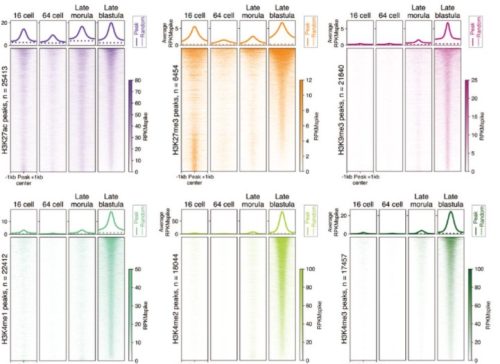
Histone marks retained during epigenetic reprogramming and their roles essential for fish early development
Hiroto S. Fukushima, Hiroyuki Takeda, Ryohei Nakamura
Germline/soma distinction in Drosophila embryos requires regulators of zygotic genome activation
Megan M. Colonnetta, Paul Schedl, Girish Deshpande
TFAP2 paralogs facilitate chromatin access for MITF at pigmentation genes but inhibit expression of cell-cell adhesion genes independently of MITF
Colin Kenny, Ramile Dilshat, Hannah Seberg, Eric Van Otterloo, Gregory Bonde, Annika Helverson, Christopher M. Franke, Eiríkur Steingrímsson, Robert A. Cornell
Premature translation of the zygotic genome activator Zelda is not sufficient to precociously activate gene expression
Elizabeth D. Larson, Hideyuki Komori, Zoe A. Fitzpatrick, Samuel D. Krabbenhoft, Cheng-Yu Lee, Melissa Harrison
Fate and state transitions during human blood vessel organoid development
Marina T. Nikolova, Zhisong He, Reiner A. Wimmer, Makiko Seimiya, Jonas M. Nikoloff, Josef M. Penninger, J. Gray Camp, Barbara Treutlein
Simultaneously spatiotemporal gene expression and chromatin accessibility for mouse brain development
Fuqing Jiang, Xin Zhou, Yingying Qian, Li Wang, Qingmei Shen, Fangfang Qu, Guizhong Cui, Kai Chen, Guangdun Peng
Regionally distinct trophoblast regulate barrier function and invasion in the human placenta
Bryan Marsh, Yan Zhou, Mirhan Kapzidic, Susan Fisher, Robert Blelloch
Comparative developmental genomics of sex-biased gene expression in early embryogenesis across mammals
Victorya Richardson, Kai Zhang, Nora Engel, Rob J Kulathinal
Maternal H3K36 and H3K27 HMTs protect germline immortality via regulation of the transcription factor LIN-15B
Chad Cockrum, Susan Strome
Arginine 65 methylation of Neurogenin 3 by PRMT1 is a prerequisite for development of hESCs into pancreatic endocrine cells
Gahyang Cho, Kwangbeom Hyun, Jieun Choi, Eunji Shin, Bumsoo Kim, Jaehoon Kim, Hail Kim, Yong-Mahn Han
Developmental phenomics suggests that H3K4 monomethylation catalyzed by Trr functions as a phenotypic capacitor
Lautaro Gandara, Albert Tsai, Mans Ekelöf, Rafael Galupa, Ella Preger-Ben Noon, Theodore Alexandrov, Justin Crocker
Targeted deletion of uterine glandular Foxa2 induces embryonic diapause in mice
Mitsunori Matsuo, Jia Yuan, Yeon Sun Kim, Amanda Dewar, Hidetoshi Fujita, Sudhansu K. Dey, Xiaofei Sun
TRIM28-dependent SUMOylation protects the adult ovary from activation of the testicular pathway
Moïra Rossitto, Stephanie Déjardin, Chris M Rands, Stephanie Le Gras, Roberta Migale, Mahmoud-Reza Rafiee, Yasmine Neirijnck, Alain Pruvost, Anvi Laetitia Nguyen, Guillaume Bossis, Florence Cammas, Lionel Le Gallic, Dagmar Wilhelm, Robin Lovell-Badge, Brigitte Boizet-Bonhoure, Serge Nef, Francis Poulat
Quantitative Analysis of Transcriptome Dynamics Provides Novel Insights into Developmental State Transitions
Kristin Johnson, Simon Freedman, Rosemary Braun, Carole LaBonne
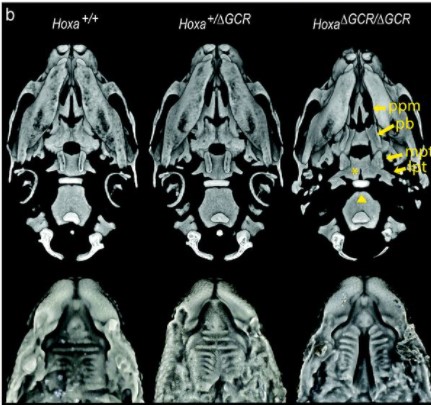
A distant global control region is essential for normal expression of anterior HOXA genes during mouse and human craniofacial development
Andrea Wilderman, Eva D’haene, Machteld Baetens, Tara N. Yankee, Emma Wentworth Winchester, Nicole Glidden, Ellen Roets, Jo Van Dorpe, Sarah Vergult, Timothy C. Cox, Justin Cotney
ID1 and CEBPA Coordinate Epidermal Progenitor Cell Differentiation
Christina Geraldine Kantzer, Wei Yang, David Grommisch, Kim Vikhe Patil, Kylie Hin-Man Mak, Maria Genander
A cell cycle-dependent GARP-like transcriptional repressor regulates the initiation of differentiation in Giardia lamblia
Han-Wei Shih, Germain C.M. Alas, Alexander R. Paredez
Sox8 remodels the cranial ectoderm to generate the ear
Ailin Leticia Buzzi, Jingchen Chen, Alexandre Thiery, Julien Delile, Andrea Streit
DNA Double Strand Breaks cause chromosome loss through sister chromatid tethering in human embryos
Jenna Turocy, Diego Marin, Shuangyi Xu, Jia Xu, Alex Robles, Nathan Treff, Dieter Egli
A spatio-temporally constrained gene regulatory network directed by PBX1/2 acquires limb patterning specificity via HAND2
Marta Losa, Iros Barozzi, Marco Osterwalder, Peyman Zarrineh, Jean Denis Benazet, Brandon Chacon, Ausra Girdziusaite, Angela Morabito, Jianjian Zhu, Susan Mackem, Terence D. Capellini, Nicoletta Bobola, Diane Dickel, Aimee Zuniga, Axel Visel, Rolf Zeller, Licia Selleri
Lhx2 in germ cells suppresses endothelial cell migration in the developing ovary
Neha Singh, Domdatt Singh, Anshul Bhide, Richa Sharma, Sarthak Sahoo, Mohit Kumar Jolly, Deepak Modi
Timing of neurogenesis through sequential accumulation of miR-9 due to additive expression of multiple alleles
X. Soto, J. Burton, C. Manning, T. Minchington, R. Lea, J. Lee, J. Kursawe, M. Rattray, N. Papalopulu
SRSF10 is essential for progenitor spermatogonia expansion by regulating alternative splicing
Wenbo Liu, Xukun Lu, Zheng-Hui Zhao, Qian-Nan Li, Yue Xue, Zheng Gao, Si-Min Sun, Wen-Long Lei, Lei Li, Geng An, Hanyan Liu, Zhiming Han, Ying-Chun Ouyang, Yi Hou, Zhen-Bo Wang, Qing-Yuan Sun, Jianqiao Liu
The shifting epigenetic landscape and roles of key transcription factors during early retinal cell differentiation
Yichen Ge, Xushen Chen, Nan Nan, Jonathan Bard, Fuguo Wu, Donald Yergeau, Tao Liu, Jie Wang, Xiuqian Mu
Dynamic nucleosome organization after fertilization reveals regulatory factors for mouse zygotic genome activation
Chenfei Wang, Chuan Chen, Xiaoyu Liu, Chong Li, Qiu Wu, Xiaolan Chen, Lingyue Yang, Xiaochen Kou, Yanhong Zhao, Hong Wang, Yawei Gao, Yong Zhang, Shaorong Gao
The Grainyhead/LSF transcription factor GRH-1 is rhythmically required for molting
Milou W.M. Meeuse, Smita Nahar, Kathrin Braun, Helge Großhans

Developmentally programmed epigenome regulates cellular plasticity at the parental-to-zygote transition
Ryan J. Gleason, Christopher S. Semancik, Gitanjali Lakshminarayanan, Xin Chen
A promoter-proximal silencer modifies the activity of a shared enhancer to mediate divergent expression of nub and pdm2 paralogs in wing development
Ryan Loker, Richard S. Mann
Nrf2 promotes thyroid development and hormone synthesis
Gillotay Pierre, Romitti Mirian, Dassy Benjamin, Haerlingen Benoit, Parakkal Shankar Meghna, Faria Fonseca Barbara, Ziros G. Panos, Pal Singh Sumeet, Sykiotis P. Gerasimos, Costagliola Sabine
microRNA-1 represses signaling pathway components to impact embryonic structures derived from all three germ layers
Nina Faye Sampilo, Jia L. Song
Induction and inhibition of Drosophila X chromosome gene expression are both impeded by the dosage compensation complex
Richard P. Meisel, Danial Asgari, Florencia Schlamp, Robert L. Unckless
Sperm mosaicism predicts transmission of de novo mutations to human blastocysts
Martin W. Breuss, Xiaoxu Yang, Valentina Stanley, Jennifer McEvoy-Venneri, Xin Xu, Arlene J. Morales, Joseph G. Gleeson
Genomic features underlie the co-option of SVA transposons as cis-regulatory elements in human pluripotent stem cells
Samantha M. Barnada, Andrew Isopi, Daniela Tejada-Martinez, Clément Goubert, Sruti Patoori, Luca Pagliaroli, Mason Tracewell, Marco Trizzino
Physoxia influences global and gene-specific methylation in pluripotent stem cells
Fatma Dogan, Rakad M Kh Aljumaily, Mark Kitchen, Nicholas R. Forsyth
LINE-1 retrotransposon activation intrinsic to interneuron development
Gabriela O. Bodea, Maria E. Ferreiro, Francisco J. Sanchez-Luque, Juan M. Botto, Jay Rasmussen, Muhammed A. Rahman, Laura R. Fenlon, Carolina Gubert, Patricia Gerdes, Liviu-Gabriel Bodea, Prabha Ajjikuttira, Peter Kozulin, Victor Billon, Santiago Morell, Marie-Jeanne H.C. Kempen, Chloe J. Love, Lucy M. Palmer, Adam D. Ewing, Dhanisha J. Jhaveri, Sandra R. Richardson, Anthony J. Hannan, Geoffrey J. Faulkner
Genome-wide binding of Drosophila Mask reveals its role in maintenance of gene activation by Trithorax group
Ammad Shaukat, Muhammad Haider Farooq Khan, Jawad Akhtar, Muhammad Abdul Haseeb, Khalida Mazhar, Zain Umer, Muhammad Tariq
Effects of somatic mutations on cellular differentiation in iPSC models of neurodevelopment
Pau Puigdevall, Julie Jerber, Petr Danecek, Sergi Castellano, Helena Kilpinen
TATTOO-seq delineates spatial and cell type-specific regulatory programs during limb patterning
Sébastien Bastide, Elad Chomsky, Baptiste Saudemont, Yann Loe-Mie, Sandrine Schmutz, Sophie Novault, Heather Marlow, Amos Tanay, François Spitz
| Stem cells, regeneration & disease modelling
Zfp503/Nlz2 is Required for RPE Differentiation and Optic Fissure Closure
Elangovan Boobalan, Amy H. Thompson, Ramakrishna P. Alur, David McGaughey, Lijin Dong, Grace Shih, Emile R. Vieta-Ferrer, Ighovie F. Onojafe, Vijay K. Kalaskar, Gavin Arno, Andrew J. Lotery, Bin Guan, Chelsea Bender, Omar Memon, Lauren Brinster, Clement Soleilhavoup, Lia Panman, Tudor C. Badea, Andrea Minella, Antonio Jacobo Lopez, Sara Thomasy, Ala Moshiri, Genomics England Research Consortium, Delphine Blain, Robert B. Hufnagel, Tiziana Cogliati, Kapil Bharti, Brian P. Brooks
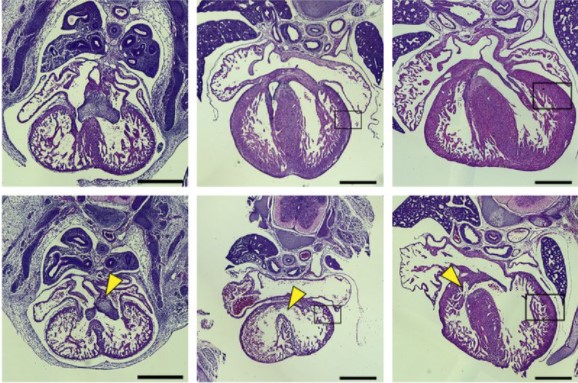
Dysregulated H19/Igf2 expression disrupts cardiac-placental axis during development of Silver Russell Syndrome-like mouse models
Suhee Chang, Diana Fulmer, Stella K. Hur, Joanne L. Thorvaldsen, Li Li, Yemin Lan, Eric A. Rhon-Calderon, Xiaowen Chen, Jonathan A. Epstein, Marisa S. Bartolomei
Gata2-regulated Gfi1b expression controls endothelial programming during endothelial-to-hematopoietic transition
Cansu Koyunlar, Emanuele Gioacchino, Disha Vadgama, Hans de Looper, Joke Zink, Remco Hoogenboezem, Marije Havermans, Eric Bindels, Elaine Dzierzak, Ivo P Touw, Emma de Pater
A nuclear receptor facilitates differentiation of human PSCs into more mature hepatocytes
Haiting Ma, Esmée de Zwaan, Yang Eric Guo, Paloma Cejas, Prathapan Thiru, Martijn van de Bunt, Jacob F. Jeppesen, Sudeepa Syamala, Alessandra Dall’Agnese, Brian J. Abraham, Dongdong Fu, Carrie Garrett-Engele, Tony Lee, Henry W Long, Linda G. Griffith, Richard A. Young, Rudolf Jaenisch
A Neurogenic Signature Involving Monoamine Oxidase-A controls Human Thermogenic Adipose Tissue Development
Javier Solivan-Rivera, Zinger Yang Loureiro, Tiffany DeSouza, Anand Desai, Qin Yang, Raziel Rojas-Rodriguez, Pantos Skritakis, Shannon Joyce, Denise Zhong, Tammy Nguyen, Silvia Corvera
Stem cells partner with matrix remodeling cells during regeneration
Blair W. Benham-Pyle, Frederick G. Mann Jr., Carolyn E. Brewster, Enya R. Dewars, Stephanie H. Nowotarski, Carlos Guerrero-Hernández, Seth Malloy, Kate E. Hall, Lucinda E. Maddera, Shiyuan Chen, Jason A. Morrison, Brian D. Slaughter, Anoja Perera, Alejandro Sánchez Alvarado
Stem cell homeostasis regulated by hierarchy and neutral competition
Asahi Nakamuta, Kana Yoshido, Honda Naoki
Single-cell analyses of axolotl forebrain organization, neurogenesis, and regeneration
Katharina Lust, Ashley Maynard, Tomás Gomes, Jonas Simon Fleck, J. Gray Camp, Elly M. Tanaka, Barbara Treutlein
Cfdp1 is Essential for Cardiac Development and Function
Giardoglou Panagiota, Deloukas Panos, Dedoussis George, Beis Dimitris
Altered patterning of trisomy 21 interneuron progenitors
Yathindar Giffin-Rao, Jie Sheng, Bennett Strand, Ke Xu, Leslie Huang, Margaret Medo, Kirstin A. Risgaard, Samuel Dantinne, Sruti Mohan, Aratrika Keshan, Roger A. Daley Jr., Bradley Levesque, Lindsey Amundson, Rebecca Reese, André M.M. Sousa, Yunlong Tao, Daifeng Wang, Su-Chun Zhang, Anita Bhattacharyya
Impact of Maternal Protein Restriction on Hypoxia-Inducible Factor (HIF) Expression in Male Fetal Kidney Development
Júlia Sevá Gomes, Letícia de Barros Sene, Gabriela Leme Lamana, Patricia Aline Boer, José Antônio Rocha Gontijo
VEGFR3 modulates brain microvessel branching in a mouse model of 22q11.2 deletion syndrome
Sara Cioffi, Gemma Flore, Stefania Martucciello, Marchesa Bilio, Maria Giuseppina Turturo, Elizabeth Illingworth
SARS-CoV-2 Can Infect Human Embryos
Mauricio Montano, Andrea R. Victor, Darren K. Griffin, Tommy Duong, Nathalie Bolduc, Andrew Farmer, Vidur Garg, Anna-Katerina Hadjantonakis, Alison Coates, Frank L. Barnes, Christo G. Zouves, Warner C. Greene, Manuel Viotti
Fgf8 dosage regulates jaw shape and symmetry through pharyngeal-cardiac tissue relationships
Nathaniel Zbasnik, Katie Dolan, Stephanie A. Buczkowski, Rebecca Green, Benedikt Hallgrimsson, Ralph S. Marcucio, Anne M. Moon, Jennifer L. Fish
En1 and Lmx1b do not recapitulate embryonic dorsal-ventral limb patterning functions during mouse digit tip regeneration
Gemma L. Johnson, Morgan B. Glasser, Julia F. Charles, Jeffrey Duryea, Jessica A. Lehoczky

Differential expression of Nanog 3UTR and coding region mRNA components defines an embryonic stem cell niche
Ze Yang, Shaoyi Ji, Leonardi Gozali, Mujib Ullah, Sophie Parsa, Barry Behr, Mary A. Hynes
Uterine injury during diestrus leads to embryo spacing defects and perturbations in the COX pathway in subsequent pregnancies
Elisa T. Zhang, Kristen L. Wells, Lars Steinmetz, Julie C. Baker
“Integration of multimodal data in the developing tooth reveals candidate dental disease genes”
Emma Wentworth Winchester, Alexis Hardy, Justin Cotney
A critical role for heme synthesis and succinate in the regulation of pluripotent states transitions
Damien Detraux, Marino Caruso, Louise Feller, Maude Fransolet, Sébastien Meurant, Julie Mathieu, Thierry Arnould, Patricia Renard
Quality assurance of hematopoietic stem cells by macrophages determines stem cell clonality
Samuel J. Wattrus, Mackenzie L. Smith, Cecilia Pessoa Rodrigues, Elliott J. Hagedorn, Bogdan Budnik, Leonard I. Zon
Ependymal cell maturation is heterogeneous and ongoing in the mouse spinal cord and dynamically regulated in response to injury
Aida Rodrigo Albors, Gail A. Singer, Andrew P. May, Chris P. Ponting, Kate G. Storey
Elevated p21 (CDKN1a) mediates β-thalassemia erythroid apoptosis but its loss does not improve β-thalassemic erythropoiesis
Vijay Menon, Miao Lin, Raymond Liang, Tasleem Arif, Anagha Menon, Laura Breda, Stefano Rivella, Saghi Ghaffari
Proteomic Profiling of Hypoplastic Lungs Suggests an Underlying Inflammatory Response in the Pathogenesis of Abnormal Lung Development in Congenital Diaphragmatic Hernia
Richard Wagner, Paula Lieckfeldt, Hadeesha Piyadasa, Moritz Markel, Jan Riedel, Camelia Stefanovici, Nicole Peukert, Daywin Patel, Gabrielle Derraugh, Suyin Lum Min, Jan-Hendrik Gosemann, Jan Deprest, Christopher D. Pascoe, Andrew Tse, Martin Lacher, Neeloffer Mookherjee, Richard Keijzer
Inflammatory response in hematopoietic stem and progenitor cells triggered by activating SHP2 mutations evokes blood defects
Maja Solman, Sasja Blokzijl-Franke, Florian Piques, Chuan Yan, Qiqi Yang, Marion Strullu, Sarah M. Kamel, Pakize Ak, Jeroen Bakkers, David M. Langenau, Hélène Cavé, Jeroen den Hertog
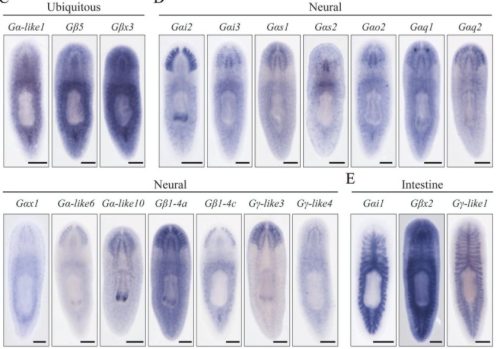
Heterotrimeric G proteins regulate planarian regeneration and behavior
Jennifer E. Jenkins, Rachel H. Roberts-Galbraith
FAM172A controls the nuclear import and alternative splicing function of AGO2
Sephora Sallis, Félix-Antoine Bérubé-Simard, Benoit Grondin, Elizabeth Leduc, Fatiha Azouz, Catherine Bélanger, Nicolas Pilon
Snrpb, the CCMS gene, is required in neural crest cells for proper splicing of genes essential for craniofacial morphogenesis
Sabrina Shameen Alam, Shruti Kumar, Marie-Claude Beauchamp, Eric Bareke, Alexia Boucher, Nadine Nzirorera, Reinnier Padilla, Si Jing Zhang, Jacek Majewski, Loydie A. Jerome-Majewska
Neovascularization and the recruitment of CD31+ cells from the bone marrow are unique under regenerative but not wound repair conditions
Kamila Bedelbaeva, Young Zhang, Azamat Azlanukov, Dmitri Gourevitch, Iossif Strehin, Phillip Messersmith, Ellen Heber-Katz
Alcam-a and Pdgfr-α are essential for the development of sclerotome derived stromal cells that support hematopoiesis in vivo
Emi Murayama, Catherine Vivier, Anne Schmidt, Anne-Lou Touret, Philippe Herbomel
The extracellular matrix fibulin 7 maintains epidermal stem cell heterogeneity during skin aging
Erna Raja, Gopakumar Changarathil, Lalhaba Oinam, Yen Xuan Ngo, Jun Tsunezumi, Ryutaro Ishii, Takako Sasaki, Kyoko Imanaka-Yoshida, Hiromi Yanagisawa, Aiko Sada
Integrative analysis of transcriptomics in human craniofacial development reveals novel candidate disease genes
Tara N. Yankee, Andrea Wilderman, Emma Wentworth Winchester, Jennifer VanOudenhove, Justin Cotney
A cell cycle-linked mechanism for the glutamine driven establishment of stem cell fate
Michael Xiao, Chia-Hua Wu, Graham Meek, Brian Kelly, Lyndsay E.A. Young, Sara Martire, Dara Buendia Castillo, Purbita Saha, Altair L. Dube, Matthew S. Gentry, Laura A. Banaszynski, Ramon C. Sun, Chintan K. Kikani
Dual specificity phosphatase 7 drives the formation of cardiac mesoderm in mouse embryonic stem cells
Stanislava Sladeček, Katarzyna Anna Radaszkiewicz, Martina Bőhmová, Tomáš Gybeľ, Tomasz Witold Radaszkiewicz, Jiří Pacherník
| Plant development
Cell-based model shows complex rearrangement of tissue mechanical properties are needed for roots to grow in hard soil
Matthias Mimault, Mariya Ptashnyk, Lionel Dupuy
Transcriptome profiling of barley and tomato shoot and root meristems unravels physiological variations underlying photoperiodic sensitivity
Michael Schneider, Lucia Vedder, Benedict Chijioke Oyiga, Boby Mathew, Heiko Schoof, Jens Léon, Ali Ahmad Naz
Dopamine pathway characterization during the reproductive mode switch in the pea aphid
Gaël Le Trionnaire, Sylvie Hudaverdian, Gautier Richard, Sylvie Tanguy, Florence Gleonnec, Nathalie Prunier-Leterme, Jean-Pierre Gauthier, Denis Tagu
Redundant PLETHORA activity promotes development of early embryonic cell lineages in Arabidopsis
Merijn Kerstens, Carla Galinha, Hugo Hofhuis, Michael Nodine, Ben Scheres, Viola Willemsen
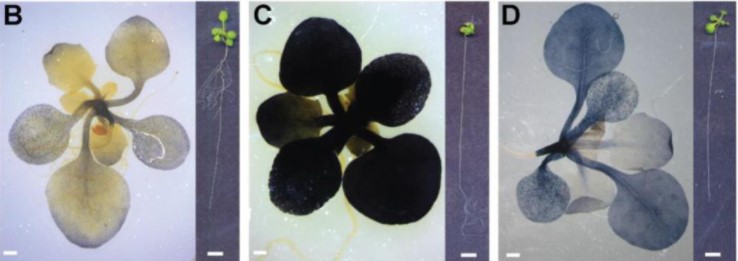
TOR acts as metabolic gatekeeper for auxin-dependent lateral root initiation in Arabidopsis thaliana
Michael Stitz, David Kuster, Maximilian Reinert, Mikhail Schepetilnikov, Béatrice Berthet, Denis Janocha, Anthony Artins, Marc Boix, Rossana Henriques, Anne Pfeiffer, Jan Lohmann, Emmanuel Gaquerel, Alexis Maizel
Complex developmental and transcriptional dynamics underlie pollinator-driven evolutionary transitions in nectar spur morphology in Aquilegia (columbine)
Molly B. Edwards, Evangeline S. Ballerini, Elena M. Kramer
Liguleless narrow and narrow odd dwarf act in overlapping pathways to regulate maize development & physiology
María Jazmín Abraham-Juárez, Michael Busche, Alyssa A. Anderson, China Lunde, Jeremy Winders, Shawn A. Christensen, Charles T. Hunter, Sarah Hake, Jacob O. Brunkard
The DC1 domain protein BINUCLEATE POLLEN is required for pollen development in Arabidopsis
Leonardo Agustín Arias, Sebastián D’Ippolito, Jésica Frik, Natalia Loreley Amigo, Claudia Anahí Casalongué, Gabriela Carolina Pagnussat, Diego Fernando Fiol
Phyllochron duration and changes through rice development shape the vertical leaf size profile
Janet P. Pablo, Benoit Clerget, Crisanta Bueno, Jacqueline Dionora, Abigail J. Domingo, Constancio C. De Guzman, Edna A. Aguilar, Nina M. Cadiz, Pompe C. Sta Cruz
The NIN-LIKE PROTEIN 7 (NLP7) transcription factor modulates auxin pathways to regulate root cap development
Narender Kumar, Chloe Caldwell, Anjali S. Iyer-Pascuzzi
MYB12 spatiotemporally represses TMO5/LHW-mediated transcription in the Arabidopsis root meristem
Brecht Wybouw, Helena E. Arents, Baojun Yang, Jonah Nolf, Wouter Smet, Michael Vandorpe, Daniël Van Damme, Matouš Glanc, Bert De Rybel
Stem cell regulators control a G1 duration gradient in the plant root meristem
Clara Echevarria, Bénédicte Desvoyes, Marco Marconi, José Manuel Franco-Zorrila, Laura Lee, Masaaki Umeda, Robert Sablowski, Kenneth D. Birnbaum, Krzysztof Wabnik, Crisanto Gutierrez
An environmentally-responsive transcriptional state modulates cell identities during root development
Marina Oliva, Tim Stuart, Dave Tang, Jahnvi Pflueger, Daniel Poppe, Jafar S. Jabbari, Scott Gigante, Jonathan Michael Dragwidge, James Whelan, Mathew G. Lewsey, Ryan Lister
| Evo-devo
Developmental timing of Drosophila pachea pupae is robust to temperature changes
Bénédicte M. Lefèvre, Stecy Mienanzambi, Michael Lang
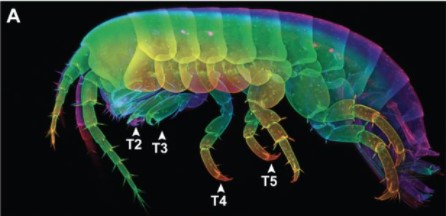
Distinct regulation of Hox genes by Polycomb Group genes in a crustacean
Dennis A Sun, Yuri Takahashi, Rebecca J Chang, Nipam H Patel
Gill developmental program in the teleost mandibular arch
Mathi Thiruppathy, J. Andrew Gillis, J. Gage Crump
Sea anemone Frizzled receptors play partially redundant roles in the oral-aboral axis patterning
Isabell Niedermoser, Tatiana Lebedeva, Grigory Genikhovich
Recent reconfiguration of an ancient developmental gene regulatory network in Heliocidaris sea urchins
Phillip L Davidson, Haobing Guo, Jane S Swart, Abdull J Massri, Allison Edgar, Lingyu Wang, Alejandro Berrio, Hannah R Devens, Demian Koop, Paula Cisternas, He Zhang, Yaolei Zhang, Maria Byrne, Guangyi Fan, Gregory A Wray
The conserved transcriptional program of metazoan male germ cells uncovers ancient origins of human infertility
Rion Brattig Correia, Joana M. Almeida, Margot J. Wyrwoll, Irene Julca, Daniel Sobral, Chandra Shekhar Misra, Leonardo G. Guilgur, Hans-Christian Schuppe, Neide Silva, Pedro Prudêncio, Ana Nóvoa, Ana S. Leocádio, Joana Bom, Moisés Mallo, Sabine Kliesch, Marek Mutwil, Luis M. Rocha, Frank Tüttelmann, Jörg D. Becker, Paulo Navarro-Costa
Ultrabithorax modifies a regulatory network of genes essential for butterfly eyespot development in a wing sector-specific manner
Yuji Matsuoka, Antónia Monteiro
Distal-less and spalt are distal organisers of pierid wing patterns
Jocelyn Liang Qi Wee, Tirtha Das Banerjee, Anupama Prakash, Kwi Shan Seah, Antónia Monteiro
Cell Biology
Ubiquitin ligases and a processive proteasome facilitate protein clearance during the oocyte-to-embryo transition in Caenorhabditis elegans
Caroline A. Spike, Tatsuya Tsukamoto, David Greenstein
SPACA6 structure reveals a conserved superfamily of gamete fusion-associated proteins
Tyler D.R. Vance, Patrick Yip, Elisabet Jiménez, Sheng Li, Diana Gawol, James Byrnes, Isabel Usón, Ahmed Ziyyat, Jeffrey E. Lee
Endothelial-derived sphingolipids are required for vascular development and systemic lipid homeostasis
Andrew Kuo, Antonio Checa, Colin Niaudet, Bongnam Jung, Zhongjie Fu, Craig E. Wheelock, Sasha A. Singh, Masanori Aikawa, Lois E. Smith, Richard L. Proia, Timothy Hla
Simultaneous suppression of ribosome biogenesis and Tor activation by TRIM-NHL proteins promotes terminal differentiation
Jinghua Gui, Tamsin J Samuels, Katarina ZA Grobicki, Felipe Karam Teixeira
Proteasomal subunit depletions differentially affect germline integrity in C. elegans
Lourds Michelle Fernando, Cristina Quesada-Candela, Makaelah Murray, Caroline Ugoaru, Judith L. Yanowitz, Anna K. Allen
STAT3 and HIF1α cooperatively mediate the transcriptional and physiological responses to hypoxia
Alberto Dinarello, Riccardo Massimiliano Betto, Linda Diamante, Chiara Cioccarelli, Giacomo Meneghetti, Margherita Peron, Annachiara Tesoriere, Claudio Laquatra, Natascia Tiso, Graziano Martello, Francesco Argenton
The X chromosome is a potential polarising signal for asymmetric cell divisions in meiotic cells of a nematode
Talal Alyazeedi, Emily Xu, Jasmin Kaur, Diane Shakes, Andre Pires-daSilva
Crumbs complex-directed apical membrane dynamics in epithelial cell ingression
Sérgio Simões, Gerald Lerchbaumer, Milena Pellikka, Paraskevi Giannatou, Thomas Lam, Dohyun Kim, Jessica Yu, David ter Stal, Kenana Al Kakouni, Rodrigo Fernandez-Gonzalez, Ulrich Tepass
Microtubules control Buc Phase separation and Balbiani body condensation in zebrafish oocyte polarity
Rachael Deis, Yaniv M. Elkouby
Cilia regulate meiotic recombination in zebrafish
Haibo Xie, Xiaosi Wang, Minjun Jin, Lanqin Li, Junwen Zhu, Yunsi Kang, Zhe Chen, Yonghua Sun, Chengtian Zhao
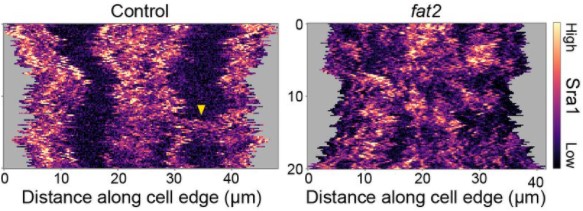
Fat2 polarizes the WAVE complex in trans to align cell protrusions for collective migration
Audrey M. Williams, Seth Donoughe, Edwin Munro, Sally Horne-Badovinac
A Pluripotent Developmental State Confers a Low Fidelity of Chromosome Segregation
Chenhui Deng, Amanda Ya, Duane A. Compton, Kristina M. Godek
Cell-intrinsic differences between human airway epithelial cells from children and adults
Elizabeth F. Maughan, Robert E. Hynds, Adam Pennycuick, Ersilia Nigro, Kate H.C. Gowers, Celine Denais, Sandra Gómez-López, Kyren A. Lazarus, Jessica C. Orr, David R. Pearce, Sarah E. Clarke, Dani Do Hyang Lee, Maximillian N. J. Woodall, Tereza Masonou, Katie-Marie Case, Vitor H. Teixeira, Benjamin E. Hartley, Richard J. Hewitt, Chadwan Al Yaghchi, Gurpreet S. Sandhu, Martin A. Birchall, Christopher O’Callaghan, Claire M. Smith, Paolo De Coppi, Colin R. Butler, Sam M. Janes
“Two-story building” of a ctenophore comb plate provides structural and functional integrity for motility of giant multicilia
Kei Jokura, Yu Sato, Kogiku Shiba, Kazuo Inaba
Mother cells control daughter cell proliferation in intestinal organoids to minimize proliferation fluctuations
Guizela Huelsz-Prince, Rutger N.U. Kok, Yvonne J. Goos, Lotte Bruens, Xuan Zheng, Saskia I. Ellenbroek, Jacco van Rheenen, Sander J. Tans, Jeroen S. van Zon
Induction of cortical Par complex polarity by designed proteins causes cytoskeletal symmetry breaking in unpolarized mammalian cells
Joseph L. Watson, Ariel J. Ben-Sasson, Alice Bittleston, James D. Manton, David Baker, Emmanuel Derivery
Lnc956-TRIM28-HSP90B1 complex on replication forks promotes CMG helicase retention to ensure stem cell genomic stability and embryogenesis
Weidao Zhang, Min Tang, Lin Wang, Hu Zhou, Jing Gao, Zhongliang Chen, Bo Zhao, Ping Zheng
Lrig3 restricts the size of the colon stem cell compartment
Janelle G. Stevenson, Ryan Sayegh, Natalie Pedicino, Natalie A. Pellitier, Tim Wheeler, Matthew E. Bechard, Won Jae Huh, Robert J. Coffey, Anne E. Zemper
Modelling

Large-scale analysis and computer modeling reveal hidden regularities behind variability of cell division patterns in Arabidopsis thaliana embryogenesis
Elise Laruelle, Katia Belcram, Alain Trubuil, Jean-Christophe Palauqui, Philippe Andrey
A constraints-based theory of the primary cause of senescence: imbalance of epigenetic and non-epigenetic information in histone crosstalk
Felipe A. Veloso
Universal dynamics of biological pattern formation in spatio-temporal morphogen variations
Mohit P. Dalwadi, Philip Pearce
Stability of asymmetric cell division under confinement: A deformable cell model of cytokinesis applied to C. elegans development
Maxim Cuvelier, Wim Thiels, Rob Jelier, Bart Smeets
Minimizing cell number fluctuations in self-renewing tissues with a stem cell niche
Rutger N.U. Kok, Sander J. Tans, Jeroen S. van Zon
Cellular compartmentalisation and receptor promiscuity as a strategy for accurate and robust inference of position during morphogenesis
Krishnan S Iyer, Madan Rao, Chaitra Prabhakara, Satyajit Mayor
Modelling mechanically dominated vasculature development
Benjamin J. Walker, Adriana T. Dawes
A mathematical modelling portrait of Wnt signalling in early vertebrate embryogenesis
Claudiu V. Giuraniuc, Shabana Zain, Shahmama Ghafoor, Stefan Hoppler
Reviews
Genetic Regulation of Central Synapse Formation and Organization in Drosophila melanogaster
Juan Carlos Duhart and Timothy J. Mosca
Pluripotent Core in Bovine Embryos: A Review
Luis Aguila, Claudia Osycka-Salut, Favian Treulen , Ricardo Felmer
Tools & Resources
SyNPL: Synthetic Notch pluripotent cell lines to monitor and manipulate cell interactions in vitro and in vivo
Mattias Malaguti, Rosa Portero Migueles, Jennifer Annoh, Daina Sadurska, Guillaume Blin, Sally Lowell
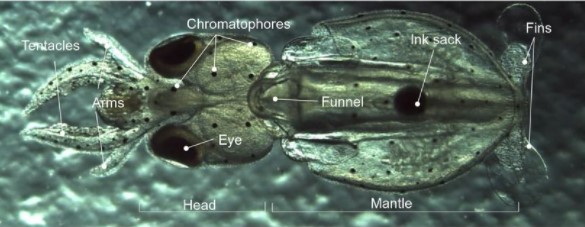
Molecular characterization of cell types in the squid Loligo vulgaris
Jules Duruz, Marta Sprecher, Jenifer C. Kaldun, Alsayed Alsoudy, Heidi Tschanz-Lischer, Geert van Geest, Pamela Nicholson, Rémy Bruggmann, Simon G. Sprecher
siRNA-mediated gene knockdown via electroporation in hydrozoan jellyfish embryos
Tokiha Masuda-Ozawa, Sosuke Fujita, Ryotaro Nakamura, Hiroshi Watanabe, Erina Kuranaga, Yu-ichiro Nakajima
Scalable Generation of Pseudo-Unipolar Sensory Neurons from Human Pluripotent Stem Cells
Tao Deng, Carlos A. Tristan, Claire Weber, Pei-Hsuan Chu, Seungmi Ryu, Vukasin M. Jovanovic, Pinar Ormanoglu, Prisca Twumasi, Jaehoon Shim, Selwyn Jayakar, Han-Xiong Bear Zhang, Sooyeon Jo, Ty C. Voss, Anton Simeonov, Bruce P. Bean, Clifford J. Woolf, Ilyas Singeç
A cellular and molecular analysis of SoxB-driven neurogenesis in a cnidarian
Eleni Chrysostomou, Hakima Flici, Sebastian G Gornik, Miguel Salinas-Saavedra, James M Gahan, Emma T McMahon, Kerry Thompson, Shirley Hanley, Michelle Kilcoyne, Christine E. Schnitzler, Paul Gonzalez, Andreas D Baxevanis, Uri Frank
Enhancing the Fitness of Embryoid Bodies and Organoids by Chemical Cytoprotection
Seungmi Ryu, Claire Weber, Pei-Hsuan Chu, Carlos A. Tristan, Ben Ernest, Vukasin M. Jovanovic, Tao Deng, Jaroslav Slamecka, Hyenjong Hong, John Braisted, Marissa Hirst, Anton Simeonov, Ty C. Voss, Ilyas Singeç
From neural border to migratory stage: A comprehensive single cell roadmap of the timing and regulatory logic driving cranial and vagal neural crest emergence
Aleksandr Kotov, Mansour Alkobtawi, Subham Seal, Vincent Kappès, Sofia Medina Ruiz, Hugo Arbès, Richard Harland, Leonid Peshkin, Anne H. Monsoro-Burq
Mechanisms underlying the reprogramming of mouse embryonic fibroblasts to thymic epithelial cells
Zhongyao Ma, Seung Woo Kang, Brian G. Condie, Nancy R. Manley
Molecular characterization of a flatworm Girardia isolate from Guanajuato, Mexico
Elizabeth M. Duncan, Stephanie H. Nowotarski, Carlos Guerrero-Hernández, Eric J. Ross, Julia A. D’Orazio, Clubes de Ciencia México Workshop for Developmental Biology, Sean McKinney, Mark C. McHargue, Longhua Guo, Melainia McClain, Alejandro Sánchez Alvarado
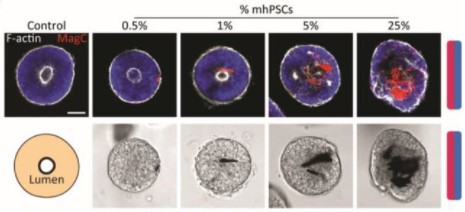
Local actuation of organoids by magnetic nanoparticles
Abdel Rahman Abdel Fattah, Niko Kolaitis, Katrien Van Daele, Andika Gregorius Rustandi, Adrian Ranga
Identification of fetal liver stroma in spectral cytometry using the parameter autofluorescence
Marcia Mesquita Peixoto, Francisca Soares-da-Silva, Sandrine Schmutz, Marie-Pierre Mailhe, Sophie Novault, Ana Cumano, Cedric Ait-Mansour
Single-cell atlas of human liver development reveals pathways directing hepatic cell fates
Brandon T. Wesley, Alexander D. B. Ross, Daniele Muraro, Zhichao Miao, Sarah Saxton, Rute A. Tomaz, Carola M. Morell, Katherine Ridley, Ekaterini D. Zacharis, Sandra Petrus-Reurer, Judith Kraiczy, Krishnaa T. Mahbubani, Stephanie Brown, Jose Garcia-Bernardo, Clara Alsinet, Daniel Gaffney, Olivia C. Tysoe, Rachel A. Botting, Emily Stephenson, Dorin-Mirel Popescu, Sonya MacParland, Gary Bader, Ian D. McGilvray, Daniel Ortmann, Fotios Sampaziotis, Kourosh Saeb-Parsy, Muzlifah Haniffa, Kelly R. Stevens, Matthias Zilbauer, Sarah A. Teichmann, Ludovic Vallier
A guide to examining intramuscular fat formation and its cellular origin in skeletal muscle
Connor D. Johnson, Lylybell Y. Zhou, Daniel Kopinke
Temporal and spatial dynamics mapping reveals follicle development regulated by different stromal cell populations
Xiaoqiang Sheng, Jidong Zhou, Nannan Kang, Wenwen Liu, Lina Yu, Zhe Zhang, Yang Zhang, Qiuling Yue, Qiwen Yang, Xinke Zhang, Chaojun Li, Guijun Yan, Haixiang Sun
In vivo assessment of mechanical properties during axolotl development and regeneration using confocal Brillouin microscopy
Camilo Riquelme-Guzmán, Timon Beck, Sandra Edwards-Jorquera, Raimund Schlüßler, Paul Müller, Jochen Guck, Stephanie Möllmert, Tatiana Sandoval-Guzmán
Highly efficient generation of blastocyst-like structures from mouse totipotent blastomere-like cells
Pengfei Zhang, Xuzhao Zhai, Boyan Huang, Shu Sun, WenJing Wang, Man Zhang
Antiviral and Neuroprotective Abilities of Influenza Virus Infection in Tractable Brain Organoids
Xiaodong Zhang, Haishuang Lin, Liangzhen Dong, Qing Xia
Major transcriptomic, epigenetic and metabolic changes underly the pluripotency continuum in rabbit preimplantation embryos
Wilhelm Bouchereau, Luc Jouneau, Catherine Archilla, Irène Aksoy, Anais Moulin, Nathalie Daniel, Nathalie Peynot, Sophie Calderari, Thierry Joly, Murielle Godet, Yan Jaszczyszyn, Marine Pratlong, Dany Severac, Pierre Savatier, Véronique Duranthon, Marielle Afanassieff, Nathalie Beaujean
The Digital 3D-Atlas MAKER (DAMAKER): a dynamic and expandable digital 3D-tool for monitoring the temporal changes in tissue growth during hindbrain morphogenesis
Matthias Blanc, Frederic Udina, Cristina Pujades
An Open-source, Cost-Efficient Excitation Module for Single-molecule Microscopy
Dylan R. George, Benjamin Ambrose, Ashley J. Cadby, Timothy D. Craggs
SCExecute: cell barcode-stratified analyses of scRNA-seq data
Nathan Edwards, Christian Dillard, NM Prashant, Hongyu Liu, Mia Yang, Evgenia Ulianova, Anelia Horvath
SpyChIP identifies cell type-specific transcription factor occupancy from complex tissues
Siqian Feng, Richard S. Mann
Development of a Novel Microfluidic Co-culture model to study Organoid Vascularization
Lydia S. Schulla, E. Diana Alupoaie, Leanne De Silva, Debby Gawlitta, Sabine Middendorp, Paul J. Coffer, M. Guy Roukens
Endometriotic Organoids: A Novel In Vitro Model of Endometriotic Lesion Development
Yong Song, Gregory W. Burns, Niraj R. Joshi, Ripla Arora, J. Julie Kim, Asgerally T. Fazleabas
A Single Cell Cloning Platform for Gene Edited Functional Murine Hematopoietic Stem Cells
Hans Jiro Becker, Reiko Ishida, Adam C. Wilkinson, Takaharu Kimura, Michelle Sue Jann Lee, Cevayir Coban, Yasunori Ota, Arinobu Tojo, David Kent, Satoshi Yamazaki
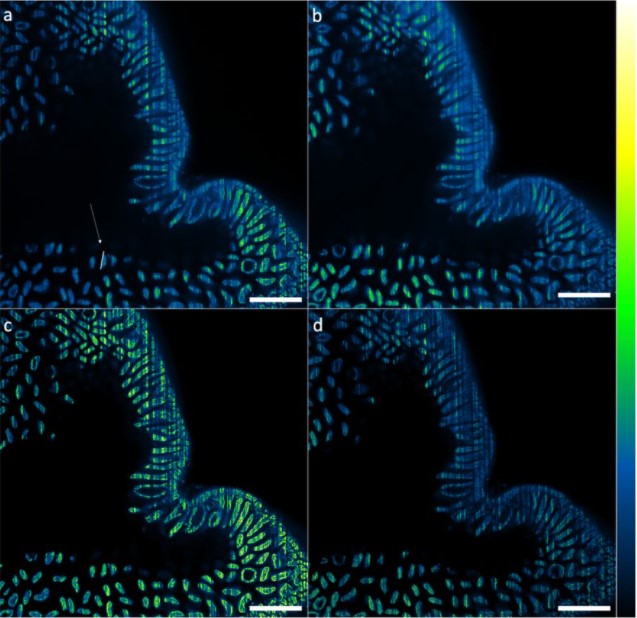
Light-sheet mesoscopy with the Mesolens provides fast sub-cellular resolution imaging throughout large tissue volumes
Eliana Battistella, Jan Schniete, Katrina Wesencraft, Juan Quintana, Gail McConnell
A microfluidic platform to investigate the role of mechanical constraints on tissue reorganization
Sham Tlili, François Graner, Hélène Delanoë-Ayari
Multimodal spatiotemporal phenotyping of human organoid development
Philipp Wahle, Giovanna Brancati, Christoph Harmel, Zhisong He, Gabriele Gut, Aline Santos, Qianhui Yu, Pascal Noser, Jonas Simon Fleck, Bruno Gjeta, Dinko Pavlinić, Simone Picelli, Maximilian Hess, Gregor Schmidt, Tom Lummen, Yanyan Hou, Patricia Galliker, Magdalena Renner, Lucas Pelkmans, Barbara Treutlein, J. Gray Camp
Comparison of CRISPR/Cas9-mediated megabase-scale genome deletion methods in mouse embryonic stem cells
Masayuki Miyata, Junko Yoshida, Itsuki Takagishi, Kyoji Horie
An integrated cell atlas of the human lung in health and disease
L Sikkema, D Strobl, L Zappia, E Madissoon, NS Markov, L Zaragosi, M Ansari, M Arguel, L Apperloo, C Bécavin, M Berg, E Chichelnitskiy, M Chung, A Collin, ACA Gay, B Hooshiar Kashani, M Jain, T Kapellos, TM Kole, C Mayr, M von Papen, L Peter, C Ramírez-Suástegui, J Schniering, C Taylor, T Walzthoeni, C Xu, LT Bui, C de Donno, L Dony, M Guo, AJ Gutierrez, L Heumos, N Huang, I Ibarra, N Jackson, P Kadur Lakshminarasimha Murthy, M Lotfollahi, T Tabib, C Talavera-Lopez, K Travaglini, A Wilbrey-Clark, KB Worlock, M Yoshida, Lung Biological Network Consortium, T Desai, O Eickelberg, C Falk, N Kaminski, M Krasnow, R Lafyatis, M Nikolíc, J Powell, J Rajagopal, O Rozenblatt-Rosen, MA Seibold, D Sheppard, D Shepherd, SA Teichmann, A Tsankov, J Whitsett, Y Xu, NE Banovich, P Barbry, TE Duong, KB Meyer, JA Kropski, D Pe’er, HB Schiller, PR Tata, JL Schultze, AV Misharin, MC Nawijn, MD Luecken, F Theis
Epithelial monolayer development and tight junction assembly on nanopillar arrays
Jose Yeste, Xavi Illa, Nitesh Shashikanth, Anton Guimerà-Brunet, Rosa Villa, Jerrold R Turner
Generation and Maturation of Human iPSC-derived Cardiac Organoids in Long Term Culture
Ece Ergir, Jorge Oliver-De La Cruz, Soraia Fernandes, Marco Cassani, Francesco Niro, Daniel Sousa, Jan Vrbský, Vladimír Vinarský, Ana Rubina Perestrelo, Doriana Debellis, Francesca Cavalieri, Stefania Pagliari, Heinz Redl, Peter Ertl, Giancarlo Forte
The Tabula Sapiens: a multiple organ single cell transcriptomic atlas of humans
The Tabula Sapiens Consortium, Stephen R Quake
Research practice & education
PhD and postdoc training outcomes at EMBL: changing career paths for life scientists in Europe
Junyan Lu, Britta Velten, Bernd Klaus, Mauricio Ramm, Wolfgang Huber, Rachel Coulthard-Graf
Animal-reliance bias in publishing is a potential barrier to scientific progress
Catharine E. Krebs, Ann Lam, Janine McCarthy, Helder Constantino, Kristie Sullivan
The gender gap in academic career achievements and the mediation effect of work-family conflict and partner support
Xiang Zheng, Haimiao Yuan, Chaoqun Ni
Hybrid conferences: opportunities, challenges and ways forward
Eleonora Puccinelli, Daniela Zeppilli, Paris Stefanoudis, Annaïg Wittische-Helou, Marjorie Kermorgant, Sandra Fuchs, Jozée Sarrazin, Erin E. Easton, Alexandra Anh-Thu Weber
Analysis of science journalism reveals gender and regional disparities in coverage
Natalie R. Davidson, Casey S. Greene
If this title is funny, will you cite me? Citation impacts of humour and other features of article titles in ecology and evolution
Stephen B. Heard, Chloe A. Cull, Easton R. White
An approachable, flexible, and practical machine learning workshop for biologists
Chris S Magnano, Fangzhou Mu, Rosemary S Russ, Milica Cvetkovic, Debora Treu, Anthony Gitter
Replacing bar graphs of continuous data with more informative graphics: Are we making progress?
Nico Riedel, Robert Schulz, Vartan Kazezian, Tracey Weissgerber


 (No Ratings Yet)
(No Ratings Yet)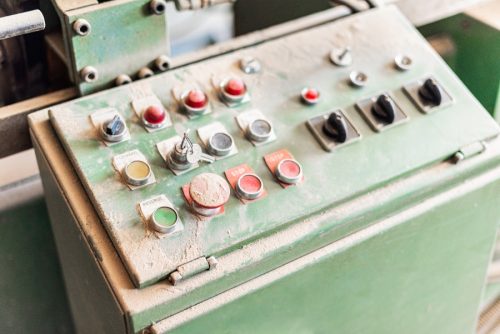
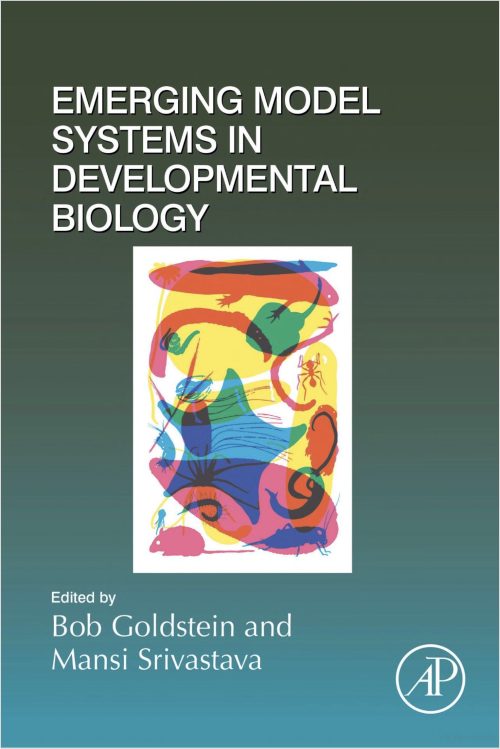
 (3 votes)
(3 votes)